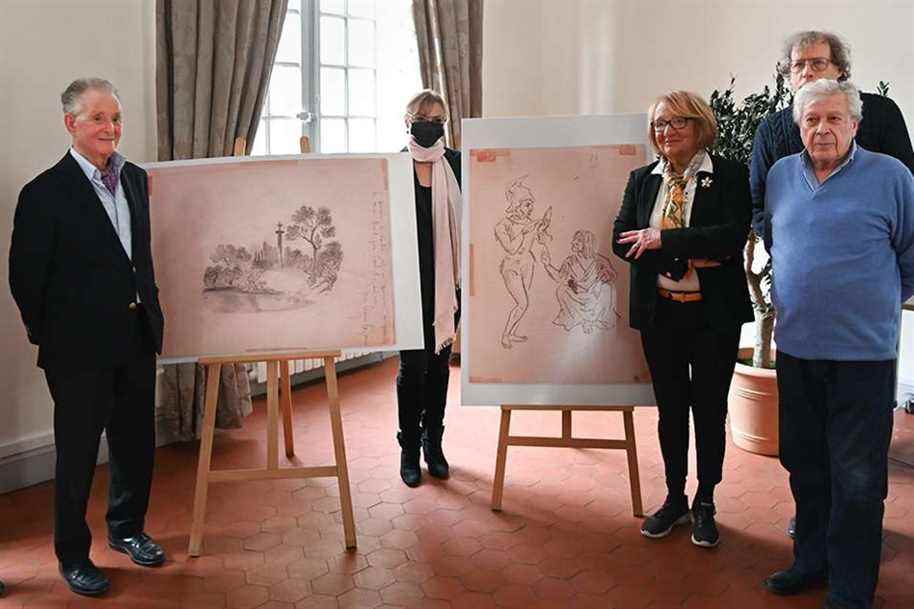(Marseille) An early drawing by Paul Cézanne (1839-1906) lost for sixty years then acquired at auction for 26,000 euros ($36,000) is “back in Aix-en-Provence”, the painter’s birthplace, City Hall announced on Friday.
Posted at 1:55 p.m.
The work is actually made up of two drawings, one made by the artist, probably when he was 19, in pen, brown ink and pencil, representing a soldier holding a small bottle and facing an old lady, barefoot, holding a vial in her right hand.
On the back, a landscape with Calvary by Marie Cézanne, Paul’s younger sister, in black pencil on paper.
These sketches were made by the Cézanne siblings and collected in a notebook, probably during the summer holidays, according to the press release from the town hall of Aix. A very childish drawing of a “little man” suggests that the youngest Rose wanted to complete “this collective work”.
These drawings underline, according to the press release, “the soothing and fraternal family environment in which Cézanne evolves and which will be essential to the affirmation of his vocation”.
The “Aix-en-Provence patronage” endowment fund mobilized to acquire this drawing with the symbol “strong for Aix-en-Provence” according to the town hall: “it was here that it was drawn, probably in la Bastide du Jas, it is a stage in the consolidation of the artistic destiny of a young man who is still hesitating”.
The work, donated by agreement to the city of Aix by the endowment fund, will be restored and framed and then exhibited at the Granet Museum, “with occasional availability of the Bastide du Jas de Bouffan”.
Paul Cézanne’s son had inherited the notebook in which this drawing appeared, which he then passed on to his son Jean-Pierre. The notebook was sold in 1947 to an American collector, who himself donated it to the Israel Museum, but with six pages missing.
The sheet acquired by the city of Aix was rediscovered in Cannes only in 2019, during a succession settlement. Although it included a note inscribed by Jean-Pierre Cézanne, the painter’s grandson, indicating that “the drawing opposite was an original drawing by (his) grandfather”, it was still necessary more than two years of research – thwarted by the health crisis – to authenticate the double-sided drawing as belonging to the so-called “Jerusalem” notebook.
